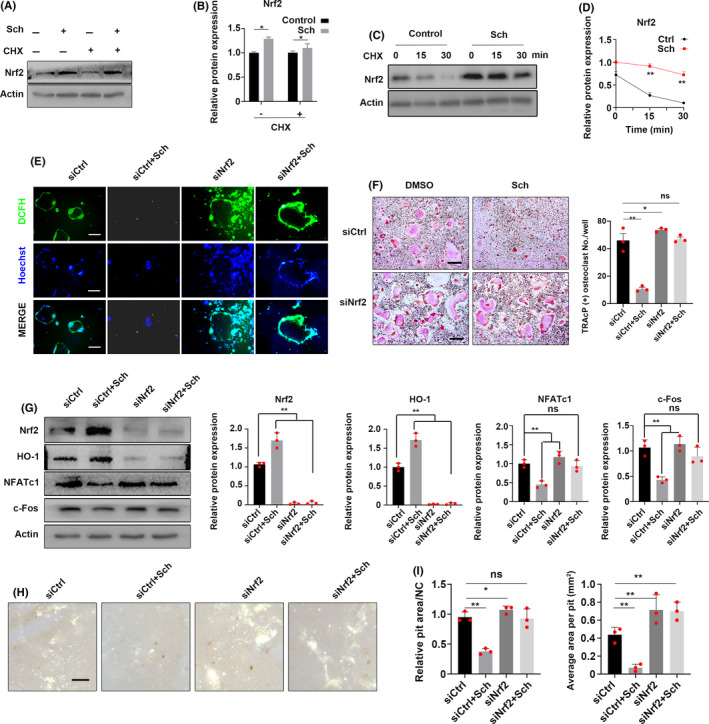FIGURE 6.

Sch suppresses the degradation of Nrf2 by enhancing its stability. Sch inhibited osteoclastogenesis by Nrf2. A, BMMs were pre‐treated with CHX for 6 h. Then, they were stimulated with Sch for 12 h. The expression of Nrf2 was analysed by Western blotting. B, Quantification of relative Nrf2 expression. C,D Degradation rate of Nrf2. BMMs were treated with CHX for the indicated time following the stimulation of Sch. The expression of Nrf2 was measured by Western blotting. E, RNAi was used to explore the role of Nrf2 and ROS in osteoclasts. Osteoclasts in siNrf2 group showed a larger area as well as higher fluorescence intensity of DCFH compared to those of other groups. Moreover, Sch could hardly rescue siNrf2‐mediated osteoclastogenesis. F, BMMs were transfected with siRNA against Nrf2 to explore its role in osteoclast differentiation. TRAcP staining was performed to detect OCs, and quantification of TRAcP‐positive cell numbers per well. Scale bar = 200 μm. G, Nrf2 knockdown could enhance the expression of NFATc1 and c‐Fos. Sch could hardly rescue the siNrf2‐mediated upregulation of NFATc1 and c‐Fos. H,I, Hydroxyapatite‐coated plates were used to detect siNrf2‐mediated OC functions. Scale bar = 200 μm. The data are shown as means ± SD. ns, no significance. *P < .05, **P < .01
